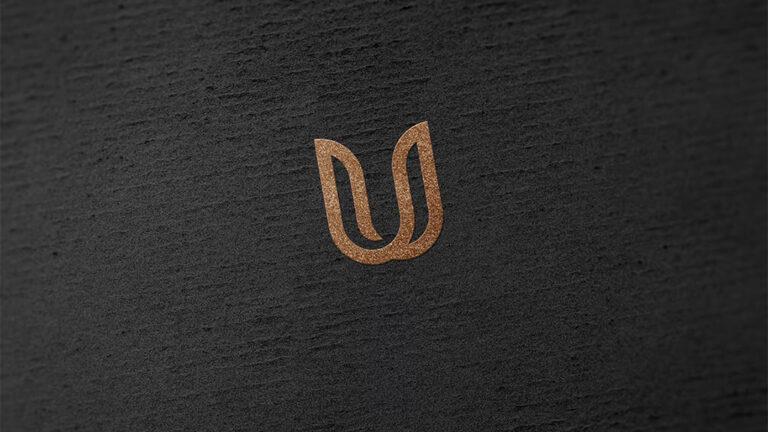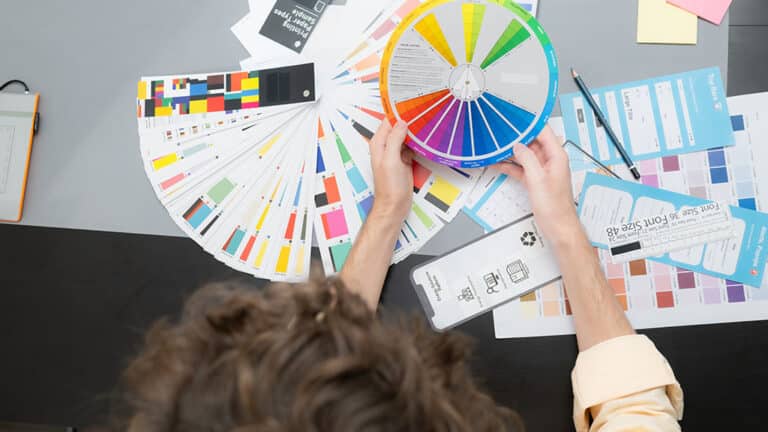5 Graphic Design Mistakes That Are Costing Your Business
When most business owners think about graphic design, they picture logos, colors, and layouts. But the impact of design goes far beyond the visual. It affects how customers perceive your brand, how easily they understand your message, and how likely they are to take action. In short, graphic design has a direct effect on your bottom line.
Poor design choices—whether due to inexperience, inconsistency, or simply lack of awareness—can quietly undermine even the best products or services. A confusing layout can turn away a potential client. An off-brand color scheme can dilute your brand identity. A site that looks outdated can cause customers to second-guess your professionalism.
These issues are easy to overlook, but they can be costly. Every missed conversion, abandoned cart, or lost lead might have been preventable with better visuals. In this post, we’ll break down five common graphic design mistakes that could be costing your business money, credibility, and customer loyalty. And if you’re ready to fix them, partnering with professionals who offer graphic design agency services can help you make a stronger visual impact from the start.
Mistake #1: Inconsistent Branding Across Platforms
One of the most common—and most damaging—mistakes businesses make is inconsistent branding. This includes using different logos, colors, fonts, or styles depending on where your brand shows up. Maybe your website uses a clean, modern look, but your Instagram feed is all over the place. Maybe your business cards look nothing like your brochures, or your emails have a completely different tone from your packaging.
This kind of visual disconnection creates confusion. Customers may wonder if they’re dealing with the same company from one platform to the next. And when people feel unsure, they hesitate—and hesitation often leads to lost opportunities.
Consistency, on the other hand, builds familiarity. When a potential customer sees the same visual identity repeated across your website, social media, email marketing, and printed materials, it reinforces brand recognition. Over time, that recognition builds trust. And trust is a major factor in purchasing decisions.
If your branding lacks visual consistency, it’s not just an aesthetic issue—it’s a strategic one. Every piece of communication should feel like it’s coming from the same voice and visual source. Tightening up your branding across all channels can help strengthen your identity and make your brand more memorable, reliable, and professional.
The Cost: Lost Trust and Missed Repeat Business
Inconsistent branding doesn’t just confuse first-time customers—it also damages your chances of turning those customers into loyal fans. People are more likely to return to a brand that feels familiar. When your visuals are cohesive, customers develop a sense of comfort and recognition. That familiarity encourages them to come back and recommend you to others.
But if your branding is constantly shifting or feels disconnected across channels, customers may struggle to build that connection. Instead of remembering your name or logo, they’ll associate your business with uncertainty. That makes them more likely to move on—and more likely to choose a competitor with a stronger, more cohesive presence.
Repeat business is built on trust. And trust is built through consistent, high-quality experiences—visually and otherwise. If you want customers to keep choosing you, your brand should always look like it knows exactly who it is.
Mistake #2: Prioritizing Aesthetics Over Function
It’s easy to get caught up in the idea that great design means making something look visually stunning—but beauty alone doesn’t guarantee results. A common mistake many businesses make is prioritizing aesthetics over usability. This happens when design choices are made based purely on what looks trendy or “cool,” without considering how real people will interact with the final product.
For example, a homepage might feature dramatic visuals and animated effects that impress at first glance, but if those choices make it difficult to find the navigation menu or read the copy, they’re working against your business goals. Similarly, a flyer with edgy typography and bold color choices may catch the eye, but if the information is hard to read or the call to action is buried, it fails to do its job.
Good graphic design blends form and function. It’s about more than visual appeal—it’s about guiding the viewer toward an action, whether that’s clicking a button, filling out a form, or making a purchase. The most successful designs are rooted in strategy: understanding what the audience needs, what action you want them to take, and how to make that path as smooth as possible.
Ignoring the functional side of design can lead to frustration, confusion, and high bounce rates. That’s why every visual decision should be made with purpose. The layout, hierarchy, contrast, and spacing should all work together to make the content more effective—not just more artistic.
The Cost: Lower Engagement and Conversions
When design gets in the way of communication, people disengage. A beautiful website that’s hard to navigate won’t convert. A stylish email that’s difficult to scan will be deleted. A clever poster that hides important information won’t drive traffic to your event.
The real cost of prioritizing style over function is a decline in user interaction. You may see fewer clicks, shorter time on page, less social sharing, or lower response rates to campaigns. And even worse, you may not even realize design is the problem—because on the surface, everything looks good.
That’s why testing and user feedback are essential. If people aren’t responding to your visuals, it’s worth asking: are they as clear and user-friendly as they are attractive? Great design should support your message, not compete with it.
Mistake #3: Ignoring Mobile Optimization
In today’s digital-first world, mobile responsiveness is no longer optional. More than half of all web traffic now comes from mobile devices—and if your design doesn’t perform well on smartphones or tablets, you’re alienating a huge portion of your audience.
One of the biggest design mistakes businesses make is treating desktop as the default, only to retrofit mobile versions later. This often results in broken layouts, distorted images, tiny text, or buttons that are impossible to tap. And when users encounter those issues on mobile, they don’t stick around—they bounce.
Mobile-first design means thinking about small screens from the start. It requires prioritizing clarity, speed, and intuitive navigation. It also means ensuring that your content scales and adapts without losing impact. Fonts should remain legible, visuals should load quickly, and every interaction should feel seamless regardless of device.
Whether it’s a landing page, social ad, or digital brochure, mobile optimization needs to be baked into the design process—not tacked on as an afterthought. Consumers expect fast, frictionless experiences, and even a slight design misstep can turn them away.
The Cost: High Bounce Rates and Abandoned Carts
Failing to optimize your design for mobile doesn’t just create a poor user experience—it directly impacts sales and conversions. If your site or landing page loads slowly, looks broken, or is hard to navigate on a phone, users won’t wait around. They’ll leave. This is especially true for e-commerce, where mobile shopping is a primary channel.
A customer may find your product through a mobile ad or Instagram post, click through to your site, and then instantly bounce if the design doesn’t render correctly. Buttons might be too small to tap, images might load off-screen, or forms might be impossible to fill out. These small frustrations cause users to abandon the process entirely—and each of those exits represents a lost sale.
The same applies to abandoned carts. A mobile checkout experience that’s cluttered or confusing will deter buyers. Clear visual hierarchy, large buttons, and intuitive design are essential for reducing friction and keeping users on the path to purchase.
If your analytics show a high bounce rate from mobile users or a large number of abandoned carts, your design may be the silent culprit. Reviewing mobile user behavior and adjusting your design accordingly can help plug the leaks and recapture lost revenue.
Mistake #4: Using Low-Quality Images and Assets
Another major graphic design mistake that quietly damages your brand is the use of low-quality visual elements. This can include pixelated images, distorted logos, poor cropping, outdated clip art, or inconsistent icons and stock photos. While it might seem minor, these visual flaws instantly lower your brand’s perceived value.
Consumers are visually literate. They can tell the difference between a professional, high-resolution photo and a generic, grainy one. If your visuals look sloppy or outdated, it can give the impression that your product or service is equally unrefined. No matter how great your offering is, low-quality assets create doubt.
This mistake often happens when businesses try to cut corners—relying on free stock photo sites, copying and pasting assets from Google, or resizing images without attention to proportion or clarity. It might save time or money in the short term, but it costs credibility in the long run.
High-quality design isn’t just about aesthetics—it’s about showing that you care about your brand and your audience. Sharp visuals, cohesive icon sets, and well-edited photos build a sense of trust. They show that you’ve put thought into your brand presentation, and that gives consumers more confidence in what you’re selling.
The Cost: Damaged Brand Perception
Poor visuals create a ripple effect. If a potential customer sees a blurry logo on your homepage or a flyer with awkward spacing and mismatched fonts, they may immediately question your legitimacy. You could be offering the best product in your category, but the design is working against you—making your business look careless or outdated.
This loss of trust can be especially damaging for newer or smaller businesses that are still trying to establish credibility. People often judge a brand’s quality by its visuals before they read a single word. If the design doesn’t meet expectations, they may never stick around long enough to discover the value you offer.
And this perception extends across all your marketing efforts. A weak visual presence can lower engagement on social media, reduce email open rates, and make your printed materials easy to ignore. If your visuals look unprofessional, people assume your business might be too.
Investing in high-quality visuals isn’t just a nice-to-have—it’s a necessity. It influences how people feel about your brand, and that perception determines whether they choose to trust you with their time, money, and attention.
Conclusion: Design Smarter to Grow Faster
Your business might offer something incredible—but if the design doesn’t reflect that, you’re likely leaving money on the table. These five common mistakes—branding inconsistency, over-prioritizing aesthetics, ignoring mobile, using low-quality visuals, and underestimating the impact of design choices—are often invisible to the business owner, but crystal clear to the consumer.
The truth is, design doesn’t just affect how your brand looks. It affects how your brand performs. Great design builds trust, communicates value, improves usability, and drives action. Poor design creates doubt, friction, and missed opportunities.
If you recognize any of these mistakes in your current branding or marketing, the good news is they’re fixable. By auditing your visual presence and prioritizing intentional, high-quality design, you can create a stronger first impression, increase engagement, and convert more leads into customers.
And if you’re not sure where to start, consider bringing in a professional eye. Designers are trained to spot inconsistencies, understand what drives user behavior, and align visuals with strategy. That kind of expertise pays off quickly—especially when every click, view, and impression counts.
At the end of the day, design is more than decoration. It’s one of the most powerful tools you have to build credibility, connect with your audience, and grow your business. So design smarter—and watch what happens when your visuals finally work as hard as you do.

















